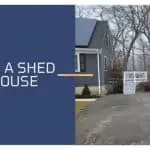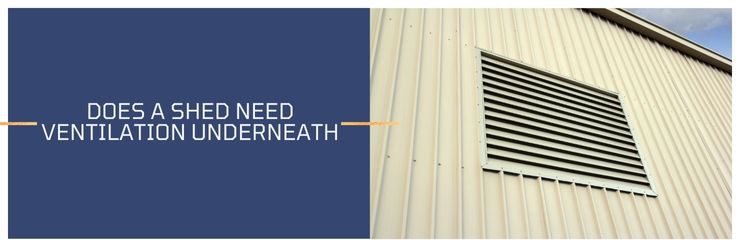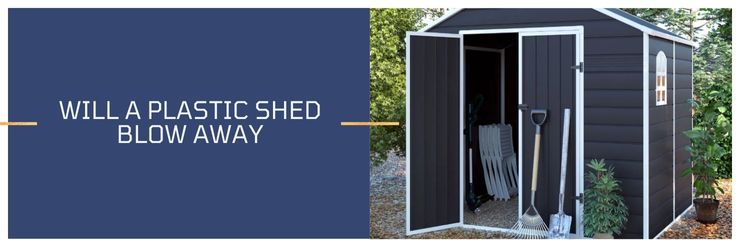If you’re planning on building a shed, it’s important to choose the right foundation. But what is the best shed foundation for wet ground?
If your yard is prone to wetness or flooding, a concrete slab or gravel may be the best option. Both of these shed foundation ideas will allow water to drain away from your shed, keeping it dry and protected.
You could also consider building a raised foundation for your shed. This will keep it above any floodwater level and ensure it stays dry. Whatever foundation you choose, make sure that it is level and firm so that your shed will be stable. Read more to know more about the best shed for a wet ground
Best Shed foundation for Wet Ground
A concrete slab is definitely the most durable foundation if you need to build your shed on a wet ground then raise the shed off the ground. But if you’re looking for something a little cheaper, you can always go with gravel
If you are thinking; do you need a shed foundation, then nearly always the answer is yes, especially when you have wet ground! Don’t just build a shed on grass – this will lead to all sorts of structural problems down the road.
Gravel is great because it allows water to drain away from the shed, which prevents moisture damage.
Plus, it’s really easy to set up – all you need is some basic tools and some help from a friend.
Make sure you level the ground first, so your shed is evenly on the gravel. Otherwise, it could end up being unbalanced and tipping over.
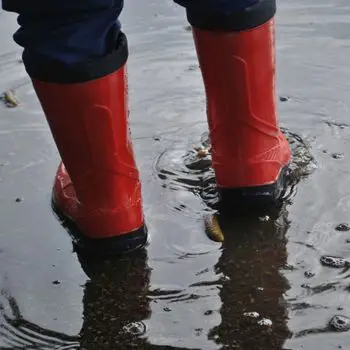
If you choose to use wood, ensure that the lumber is pressure treated, and the screws or nails are also pressure-treated.
This will help the longevity of your shed on a wet ground conditions. If you choose to use concrete, you will want to make sure that the base is at least 4” thick and reinforced with rebar.
The reason being is that when concrete gets wet, it can heave and push against your shed walls, causing them to crack, warp, or worse yet, collapse.
These are just a few things to consider when choosing the best foundation for your wet ground shed project.
Please consult with a local building professional in your area to get their take on what might work best for you and your situation.
Why is Gravel the Best Base for a Shed When You Have Wet Ground
If you’re looking to build a shed on wet ground, gravel is the best base you can use.
The rough, porous surface of the gravel prevents water from splashing up and damaging the shed.
Instead, the water quickly soaks into the ground. With a concrete base, water from the roof will splash up against the sides of the shed.
This increases the likelihood that any wood (including siding) on your shed will rot over time.
Gravel is also much easier to work with than concrete, so it’s worth considering if you’re doing the work yourself.
In the end, using gravel as a base for your shed is a sound investment that will pay off in the long run.
How Deep Should a Gravel Base be for a Shed
In general, a shed with a gravel foundation should be 4″ to 6″ deep. This will give you enough room for a layer of gravel and a layer of sand. The sand will help to level out the shed, and the gravel will help with drainage.
If you live in an area with a lot of rain, you may want to go with a 6″ deep foundation. If you live in an area with very little rain, you can get away with a 4″ deep foundation.
The depth of your foundation will also depend on the height of your shed. If you’re planning to build a tall shed, you may need to make your foundation deeper in order to provide stability. An important consideration when starting any backyard project, is does you shed need planning permission before you start.
When in doubt, it’s always best to consult with a professional contractor before beginning any construction project.
With their help, you can ensure that your shed will be built on a strong and durable foundation.
How Do I Keep Water From Getting Under My Shed?
Many people enjoy the satisfaction of owning their own garden shed. A shed can provide a space to store lawn equipment, gardening tools, and other outdoor items.
It can also be a place to relax and enjoy the outdoors without having to deal with the elements. However, sheds are often located in areas that are prone to waterlog, which can lead to the shed becoming unstable or even collapsing.
You can do a few things to prevent water from getting under your shed.
- First, make sure that the shed is elevated off the ground on a foundation of concrete blocks or wooden posts. This will allow water to drain away from the shed rather than pooling underneath it.
- You should also consider installing gutters and downspouts around the shed’s perimeter to catch and redirect rainwater.
- Reduce vegetation growing around your shed – particularly trees and shrubs- as their roots can damage the shed’s foundation.
- Install siding made of water-resistant materials, such as vinyl or metal, to keep water from seeping in through the walls.
- Finally, ensure that any gaps or cracks around doors and windows are sealed with caulk or weatherstripping to prevent moisture from seeping in. These precautions can help keep your shed dry and safe for years.
What to Put Under Shed to Stop Rotting
When it comes to preventing your shed from rotting, you can do a few things.
First, make sure you have a gravel base for the shed. This will help with drainage and keep water from sitting around the shed.
Second, put the whole shed up on deck blocks. This will allow air to circulate under the shed and help to prevent moisture buildup.
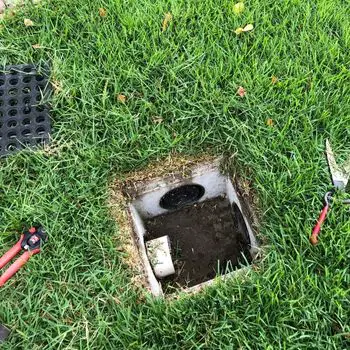
Finally, consider a french drain to drain water away from the shed. By taking these simple steps, you can help to prevent your shed from rotting.
Conclusion
When it comes to the best shed foundation for wet ground, there are a few different options to choose from. You could use a concrete slab, gravel, wooden skids, or piers.
But which is the best shed foundation for wet ground? Gravel is definitely the way to go if you’re on a budget or want something a little easier to set up.



